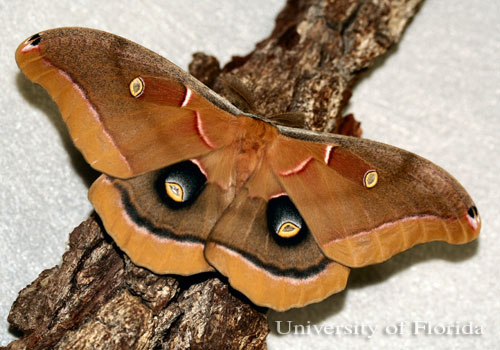
Naturalist Annie Dillard mused, “The question from agnosticism is, Who turned on the lights? The question from faith is, Whatever for?†John Muir answered, “faith is a baptism of light.â€Polyphemus
Dillard published Pilgrim At Tinker Creek in 1974 and it became a Pulitzer Award winner. Considered by Edward Abbey as the “true heir apparent†to Henry Thoreau’s throne of nature writing and transcendentalism, she easily correlated ecology and spirituality.
I am probably considered gender-biased by some when I suggest that she (along with Gretel Ehrlich, Dian Fossey, Rachel Carson and Dr. Jane Goodall etal) writes from a female perspective. One of the great mysteries of human reproductive dimorphism is that females can experience, think, know and feel things that males cannot and visa-versa.
Recent discoveries in differences between the anatomy and physiology of female and male brains indicate that they are similar, but quite different organs. In her book, Natural History of Love, Diane Ackerman describes critically important differences in male and female brains, which are essential for human survival. In her books, The Male Brain and the Female Brain, Dr. Louann Brizendine further corroborates this premise.
Dillard had a traumatic experience when she was a young girl attending an elementary school and poignantly described it years later.
As typical behavior for elementary kids, one of the students brought a moth cocoon to school, attached to a small branch. The teacher was busy and probably not aware that the cocoon was a Polyphemus moth. She put the branch into the closest Mason Jar and went on with the day’s lessons. This happened on a Friday and at day’s end, all went home for the weekend.
On the following Monday morning the teacher and students were shocked to see that the moth had emerged from its cocoon. Unfortunately, the jar was too small for the wings to fully expand and they hardened like pieces of crumpled paper. Not knowing what to do, she led the young students out to the school playground and bounced the moth onto the pavement. The horrible image of the moth, walking on legs not meant for walking, carrying crumpled wings incapable of flight was etched in Dillard’s brain as vividly as acid etches images on glass.
I was profoundly moved by reading the story and had no idea that it would later become a powerful metaphor for the Biodesign Class. However, unlike the moth, our story had potentially redemptive qualities.
It was not uncommon for Biodesign students, who had spirit-crippling experiences, to discover natural revelations that enabled them to “fly,†whether on top of Yosemite’s Half Dome, somewhere in Grand Canyon or among the redwoods of the Mendocino Coast. It was almost automatic that students saw visions, marvels, even small miracles that often liberated them from their “Mason Jar.†Perhaps it should not have been surprising because John Muir, Henry Thoreau, Loren Eiseley and Annie Dillard etal had prepared them for their transcendental flight.
“In God's wildness lies the hope of the world - the great fresh unblighted, unredeemed wilderness. The galling harness of civilization drops off, and wounds heal ere we are aware.â€Â
                                                                      John of the Mountains
It is with deep sorrow that I fear that Dillard’s tragic story has become a metaphor for public schools in the US. Secular humanism, scientism and political correctness are providing a silent, but toxic atmosphere stifling all references to spirituality. It is highly likely that students will go from kindergarten to grad school without hearing or discussing the importance of spiritual awakenings in a fully-functioning human.
Psychology Today and other reliable sources of mental health information have reported an alarming trend among teens and young adults of increasing depression, anxiety, lack of purpose and a waning taste for life. These are all contraindicators of a life that is vibrant, enthusiastic, and filled with visions, marvels, wonders (even miracles) of God’s creation.
Eminent psychologist, Abraham Maslow, author of, Religions—Values—Peak Experiences (self-identified secular humanist) was aware of the danger when he allowed; “I want to demonstrate that spiritual values have naturalistic meaning, that they are not the exclusive possession of organized churches, that do not need supernatural concepts to validate them, they are well within a suitably enlarged science and therefore the general responsibility of all mankind.â€
After leading classes into the wilderness for 24 years, it is heartbreaking to know that fewer and fewer students will have the opportunity to sit around a campfire and share Poems and Prayers and Promises and things that they believe in (John Denver). The naturalist philosophy of Muir, Thoreau, Emerson etal, has been marginalized and regarded as intellectually obsolete. Ergo: countless millions of students will not experience what Muir meant when he wrote:
“One day’s exposure to mountains is better than a cartload of books.â€
Paraphrasing RL Stevenson’s children’s poem:
“The world is so full of such wondrous things,
  I’m sure we should all be as happy as kings.â€
Annie Dillard might respond; If not, why not?
